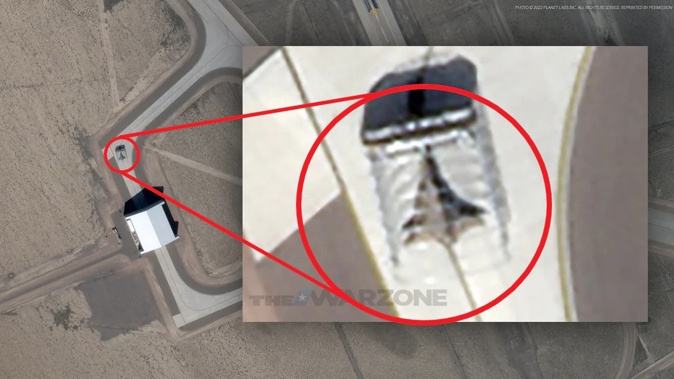
The secret squirrels of Area 51 appear to have slipped up. A passing commercial satellite seems to have snapped its top-secret next-generation combat aircraft on the tarmac.
Tyler Rogoway of The War Zone was reviewing Planet Labs satellite photos of the high-profile secret site last month when he spotted something out of the ordinary.
The highly classified United States Air Force (USAF) Nevada testing facility is usually especially careful. Air operations are timed during the gaps between Earth observation and surveillance satellite overpasses.
This time, it appears to have been caught wrong-footed.
On the taxiway leading through a massive new hangar was a strange shadow.
It appears to be a translucent 'tent'.
Inside it is the outline of what appears to be an unknown new type of fighter aircraft.
"Area 51 is always a popular spot when it comes to publicly available satellite imagery," Rogoway wrote. "When glancing at daily three-meter resolution images of the base, we noticed the appearance of a roughly delta-shaped blob on the north apron of the large southern hangar."
It stayed there between January 26 and 29, 2022.
Google Earth's most recent uploaded image is from August 2019. And while it shows nothing of interest on the ground, it does offer a crisp view of the mysterious new hangar situated by itself on the southern edge of the facility.
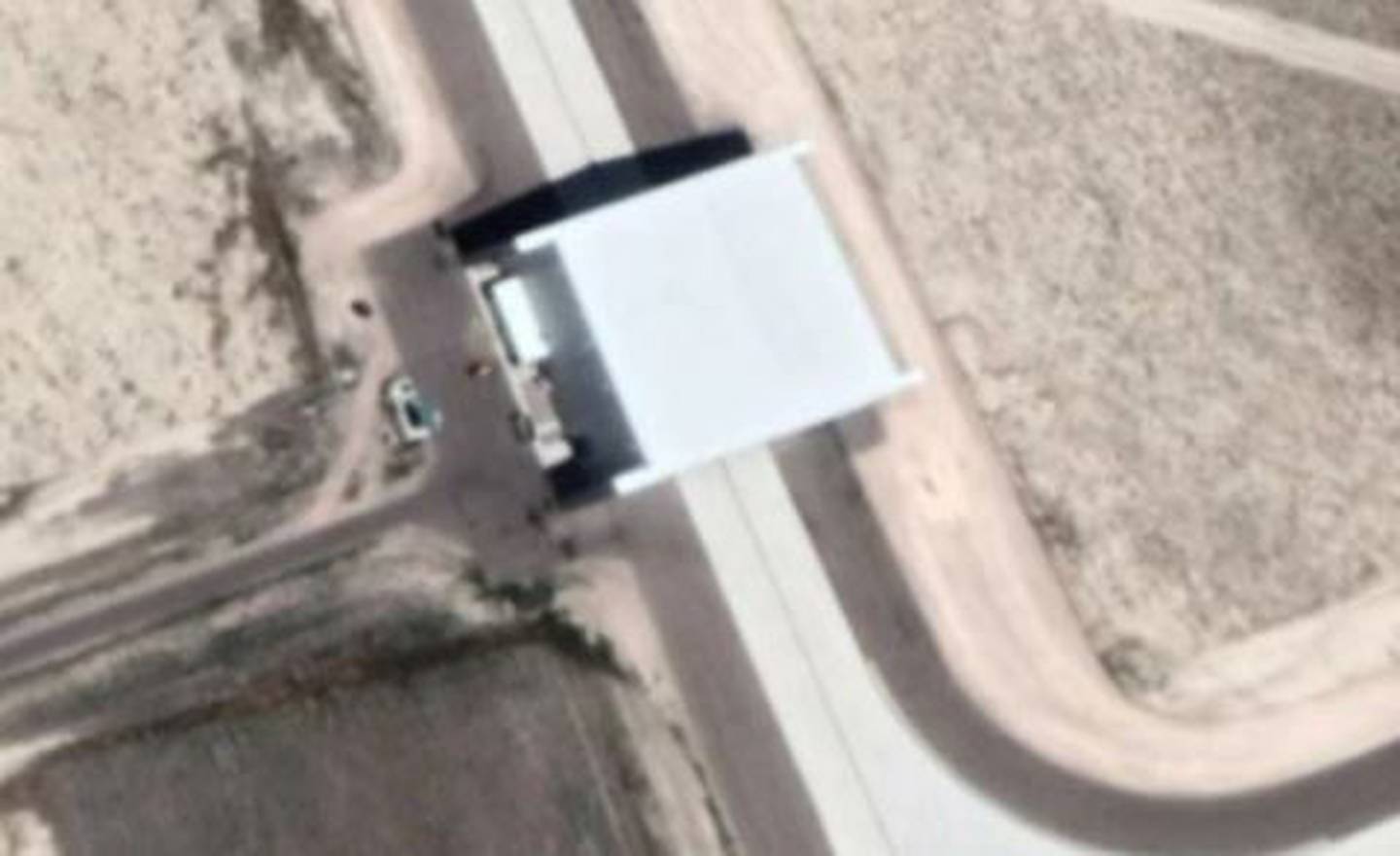
The large new hangar at the centre of the new sighting of a strange aircraft at Area 51.
But the recent Planet Labs snaps reveal much more.
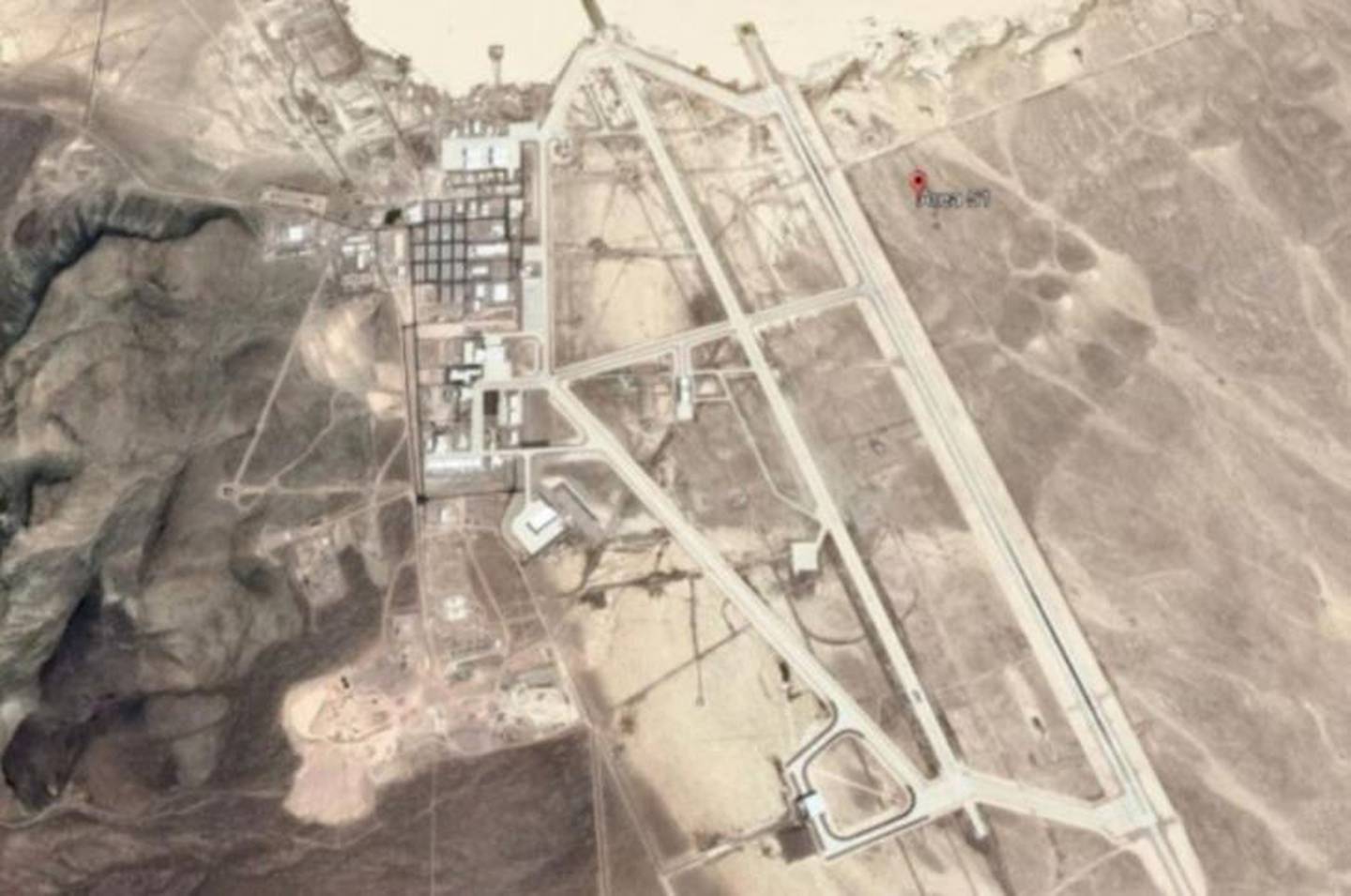
A Google Earth image from 2019 of the Groom Lake testing facility - otherwise known as Area 51.
"The blob was actually an exotic delta-shaped aircraft under an unenclosed skeleton-like structure just sitting in the middle of the apron," writes Rogoway.
Now the world's military aircraft analysts and enthusiasts are striving to figure out precisely what it is.
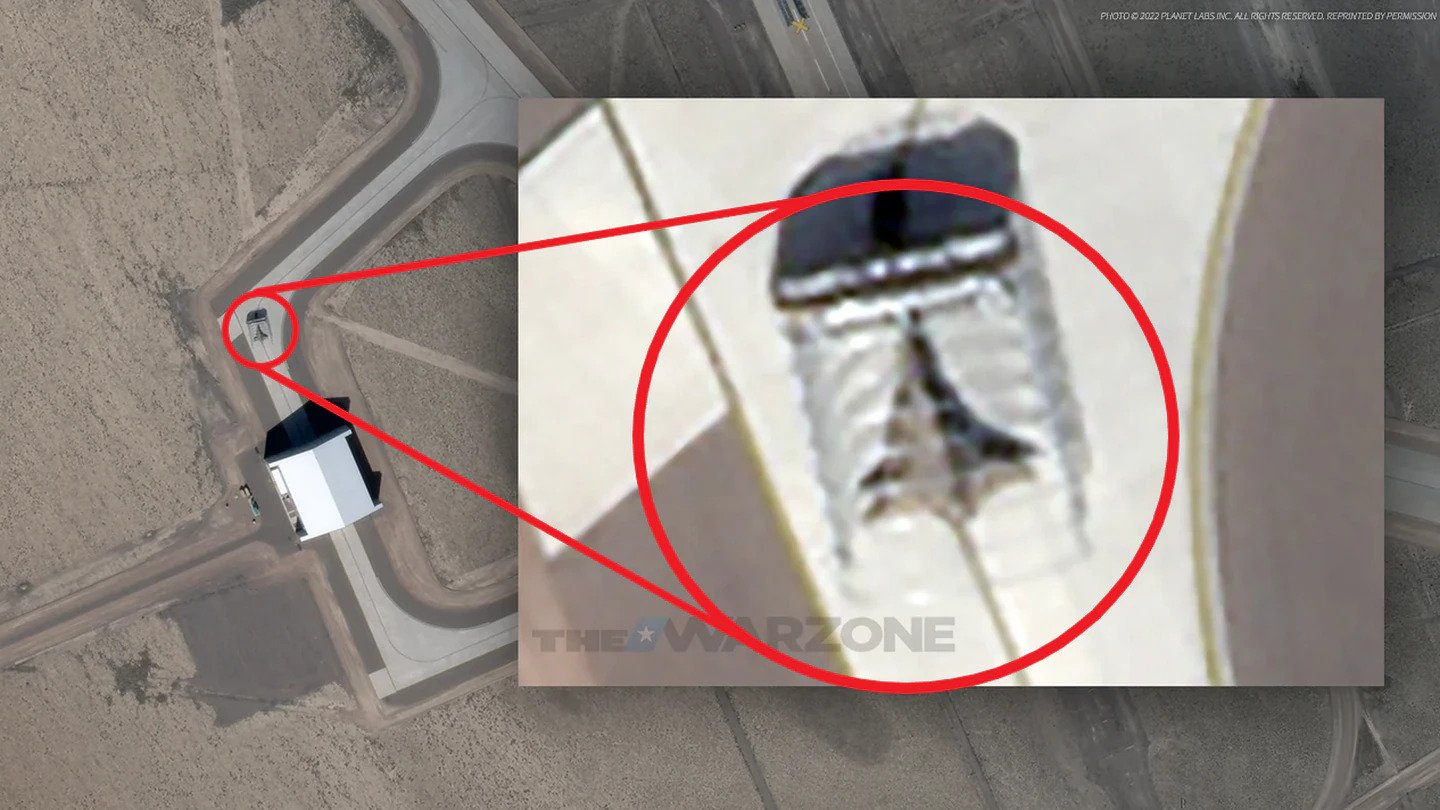
The delta-shaped aircraft seen at Area 51. Photo / The Warzone
When life gives you lemons …
That the United States is racing to build a new combat aircraft is no secret.
The US Navy, in particular, is keen to field a replacement for its much-delayed F-35C stealth strike fighters. Photos from their first-ever operational deployment aboard the USS Carl Vinson reveal them covered in rust with their radar-absorbent skin cracking up.
And, on January 24, one of the ultra-advanced, computer-assisted aircraft crashed on landing – injuring about eight crew members before skidding into the sea. Now the race is on to salvage the $150 million jet from the South China Sea before its technology can be recovered by Beijing.
Now the entire F-35 project is again in doubt. The US Armed Services Committee chair Adam Smith has declared he wants to stop "throwing money down that particular rat hole".
Some 900 design flaws have been designated. Seven of them are classified as "critical".
It's estimated that one in five aircraft are sitting idle with severe engine failure and a lack of spare parts. The entire fleet can't fly faster than the speed of sound for longer than a few seconds because of fears they will break up.
"I would absolutely call the F-35 a lemon," a former US Marine Corps aviation captain declared.
So, the appearance of a potential replacement is, in many quarters, a welcome development.
Part of the fix appears to be a return to different aircraft types for the US Navy and Air Force. The "one size fits all" approach of the F-35 seems to have produced compromises that pleased nobody.
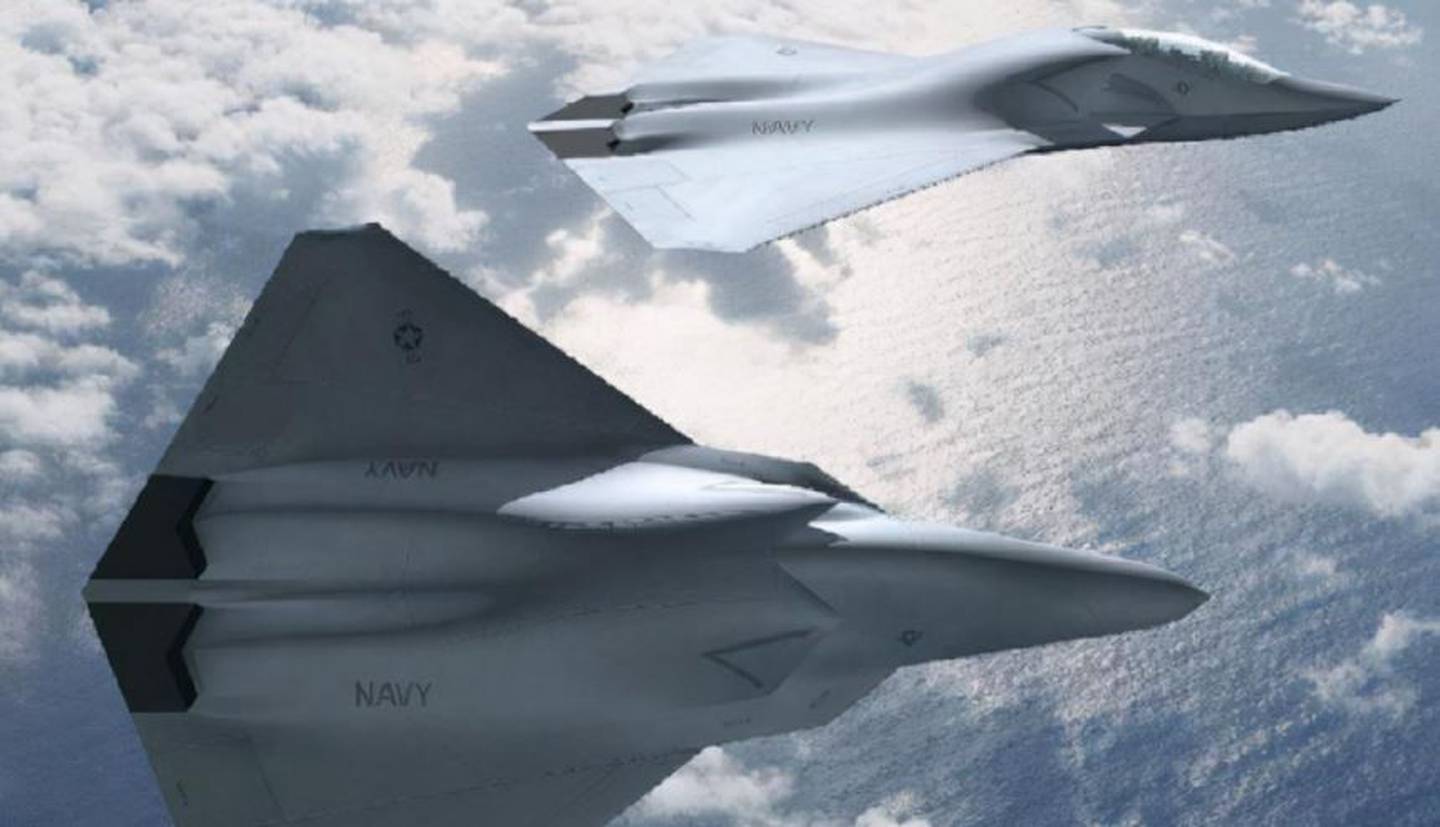
A Boeing fighter aircraft concept tailored to the US Navy's needs. Photo / Supplied
The USAF has asked for increased weapons load and range. The US Navy is seeking greater resilience, operational radius and suitability for operations at sea.
But highest on the agenda is reliability.
There's no point in having the world's most complex aircraft if it can't get off the ground.
Next generation air dominance fighter
The Planet Labs pictures show an aircraft of roughly comparable size to the large F-15 Eagle interceptor fighters of the 1970s.
That's considerably bigger than an F-35.
And while the frame of the 'tent' that the mystery aircraft is contained within breaks up its shape somewhat, it appears to be a 'delta' wing design with curled wingtips.
That loosely fits the marketing hype from the likes of Lockheed Martin and Boeing about their next-generation fighter concepts.
Most are shown as large, tailless delta wing aircraft. We also know one is in the air.
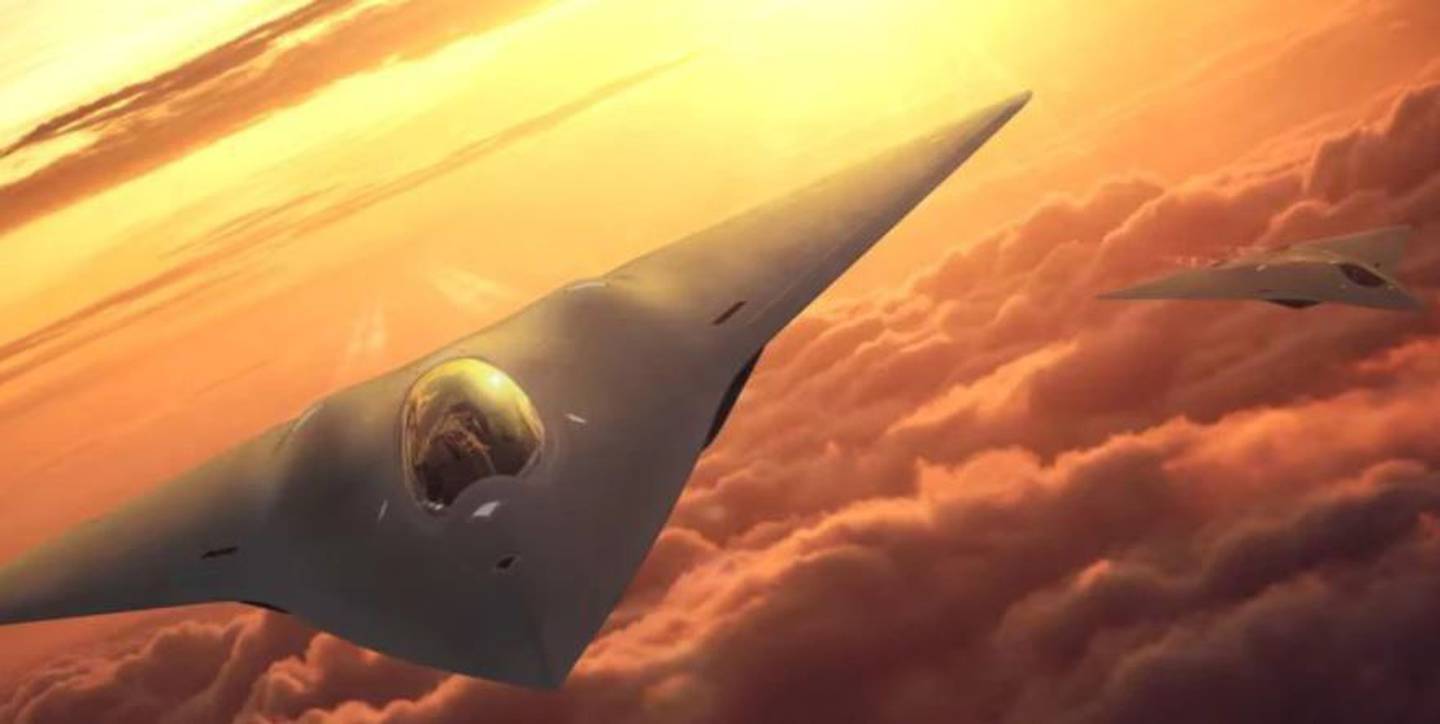
A Lockheed Martin concept image of its proposed sixth-generation combat fighter. Photo / Supplied
In September 2020, the US Air Force revealed that a "demonstrator" test aircraft had begun flight testing.
"We've already built and flown a full-scale flight demonstrator in the real world – and we broke records in doing it," said Dr Will Roper, Assistant Secretary of the Air Force for Acquisition, Technology and Logistics. "We are ready to go and build the next-generation aircraft in a way that has never happened before."
That implies lessons have been learned from the F-35's massive delays and poorer-than-promised performance.
The US Air Force last year reassured the public that its sixth-generation fighter jet project was underway. "I will just tell you that it is progressing per plan," an official told an air conference. "There's just so much of it that's not able to be discussed in an open forum."
Some clues, however, have since been seen.
Flights of fancy?
Late last year, an F-22 "Raptor" test aircraft was pictured flying covered in a strange mirror-like material. Also last year, an unusual – flowing – airframe shape was spotted outside Lockheed Martin's secret "Skunk Works" advanced aircraft facility.
Meanwhile, military insiders continue to obsess about the potential of artificial intelligence in assisting pilots.
"We're trying to take some of this workload off the pilot. They are human, and they can only do so much," a Raytheon design executive recently said. "As the systems get more and more complex, it becomes very challenging for them."
That's what's on the glossy brochure at least.
Either way, USAF Air Combat Command chief Mark Kelly says a sense of urgency is needed.
"Do I think we're going to field it? Yes. Do I think we're going to build it before our adversaries? Yes. Do I know we are going to build it before them? … I would like to sleep comfortably knowing we've got a really good margin," he said in October.
But the exact nature of the Area 51 aircraft remains uncertain.
Its wings suggest it could also be a high-speed spy plane in a similar vein to the long-retired SR-71 Blackbird. It also could be an attempt to produce a full-sized artificial-intelligence controlled combat drone.
Or, it could be nothing at all. It could just be an elaborate hoax.
"In fact, considering where this happened and the facility's long record of perfection when it comes to hiding everything it needs to from satellites overhead, this would seem far more probable than possible," Rogoway concludes.
- by Jamie Seidel, news.com.au
Take your Radio, Podcasts and Music with you









